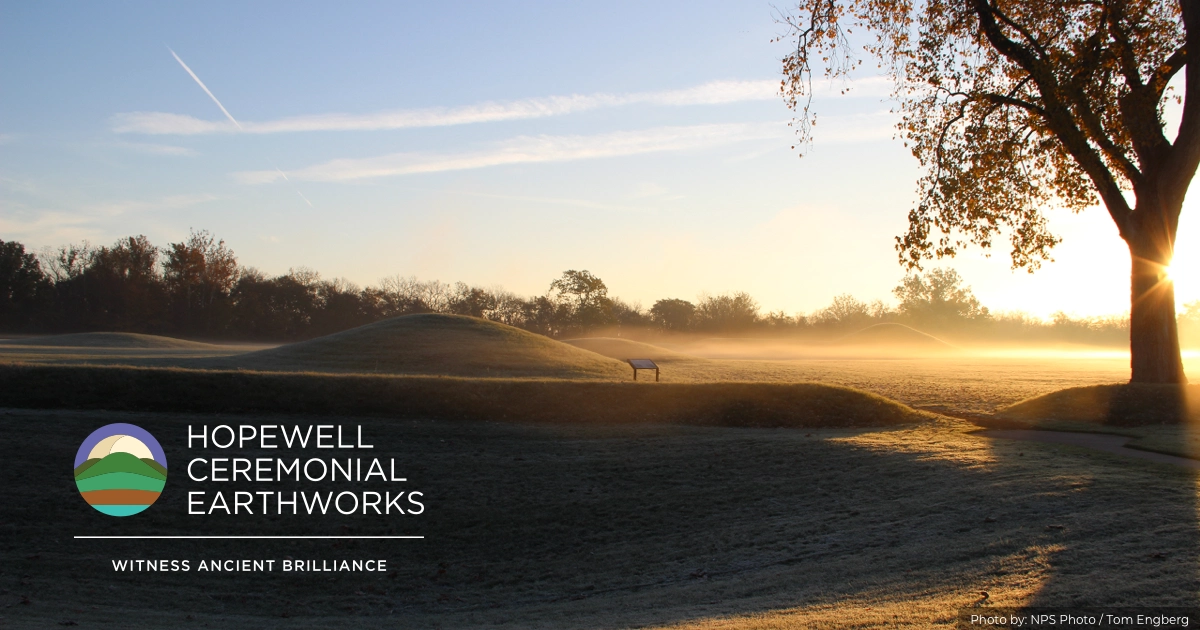Noteworthy Events
In 2023, eight monumental earthen enclosure complexes in Ohio, including the Ohio Newark Earthworks, were designated as a UNESCO World Heritage Site. Built along the central tributaries of the Ohio River over 2,000 years ago, these sites are the most representative expressions of the Indigenous tradition now referred to as the Hopewell culture. In 2024, controversial issues surrounding the Octagon component of the Newark Earthworks were resolved, with the Ohio History Connection set to assume property management responsibilities beginning January 1, 2025.
Problem/Opportunity Statement
The Ohio Newark Earthworks and other sites scattered throughout Ohio continue to be underappreciated cultural assets. The UNESCO World Heritage designation and the January 2025 opening of the Octagon component of the Ohio Newark Earthworks, combined with the upcoming Spring 2025 Moonrise, generates a constellation of opportunities for increasing Ohioans’ awareness and deeper understanding of these cultural sites and Indigenous Peoples.
Survey Partnership Effort
Building on previous collaborative work, The Ohio State University’s Newark Earthworks Center (NEC) is partnering with CHRR at The Ohio State University to conduct a public opinion survey on topics related to Ohio’s Earthworks and Native American citizens. Using an Ohio-specific sample from the American Population Panel, researchers will gather information on several issues, including:
- Present awareness of and previous visits to the eight Ohio Earthworks sites
- Current familiarity with the UNESCO World Heritage designation, the imminent opening of the Octagon, and the second Major Lunar Standstill of the 21st Century (observable through 2024-2026 at High Banks and Octagon State Memorial)
Timing
Plans are underway to field this survey in January 2025, coinciding with the Ohio History Connection assuming responsibility for property management of the Newark Earthworks.
Funding Resources
Stephen M. Gavazzi, professor in the College of Education and Human Ecology and Director of CHRR at The Ohio State University, will provide an initial $10,000 from his program funds in support of this survey effort. This amount of funding will underwrite a survey of around 5-6 questions administered to approximately 1,000 citizens in Ohio.
Potential for Partnerships
This survey effort is being undertaken as a first step in understanding Ohioan citizen awareness of and understanding of the Ohio Earthworks. Future partnerships would allow for an expansion of both amount and scope of survey items, as well as reaching greater numbers of survey participants throughout Ohio.
Contacts
If you are interested in obtaining further information about this survey effort, please feel free to contact Dr. Stephen M. Gavazzi, Director of CHRR at The Ohio State University (Gavazzi.1@osu.edu).




%20(Facebook%20Post).png?itok=jKghYuZN)